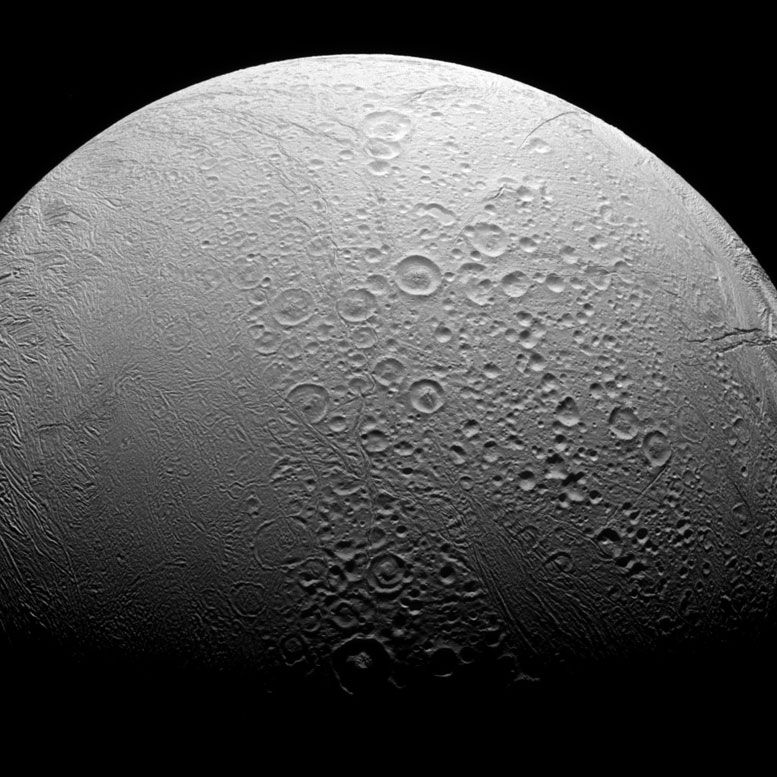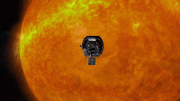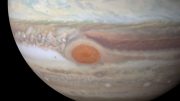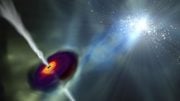
Enceladus, Saturn’s moon, is divided – the north has many craters, while the south is smoother with wrinkles from geological activity. Credit: NASA/JPL-Caltech/Space Science Institute
This newly released Cassini image shows Enceladus at a distance of approximately 41,000 miles (66,000 kilometers) away.
Enceladus is a world divided. To the north, we see copious amounts of craters and evidence of the many impacts the moon has suffered in its history. However, to the south we see a smoother body with wrinkles due to geologic activity.
Most solar system bodies lacking an atmosphere are heavily cratered like Enceladus’ (313 miles or 504 kilometers across) northern region. However, the geologic activity in the south, including the famous plume above the moon’s south pole, can erase craters and leave a younger, smoother-looking surface.
This view looks toward the anti-Saturn hemisphere of Enceladus. North on Enceladus is up and rotated 4 degrees to the right. The image was taken in visible light with the Cassini spacecraft narrow-angle camera on November 27, 2016.
The view was obtained at a distance of approximately 41,000 miles (66,000 kilometers) from Enceladus. Image scale is 1,310 feet (398 meters) per pixel.









Why don’t we can compare this to the one sided cratered surface of Pluto while the other side is more even? More mateors on anti- sun side of Pluto caused by the stones in the cometary belt originating beyond Pluto. Thank You.